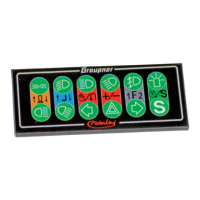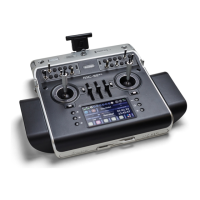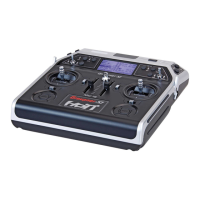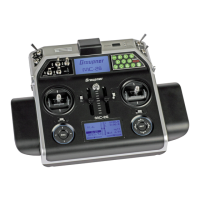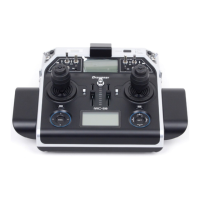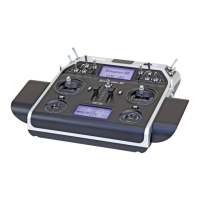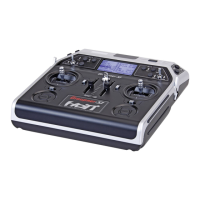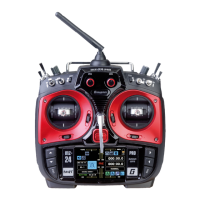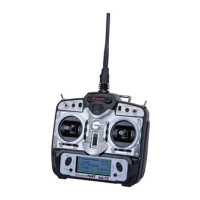89
Program description - Base setup models | Winged models
3. Place the model on a level surface (pavement,
low-cut grass or bare ground) such that receiver
antennas are at least 15 cm above ground level.
It may be necessary to put something under the
model to raise it up enough for this.
4. Hold the transmitter at hip level and at some
distance from one's body. Do not point the
antenna directly at the model but rather turn and/
or kink the antenna's end so that it is oriented
vertically during the test.
5. If necessary, use the selection keys of the left
or right touch pad to reach the "RF range test" line
in the menu then start range test mode with a tap
on the centre SET key of the right touch pad.
Module
bind
bind
n/a
n/a
HoTT
SET SET SEL SET
Rcv Ch Map R16 R08
n/a
n/a
RF transmit on
RF range test 99s
BASIC SETTING,MODELL
Note:
• If the message...
SWITCH RF ON
... appears, the RF module of the transmitter is
inactive. Turn on the RF module and try again.
• If instead, the message ...
CAN‘T
RECEIVE
DATA
... is displayed, there is no connection to a
receiver. Switch on the receiving system of your
model or check the radio connection to your model
and repeat the process afterwards.
When the range test has been initiated,
the transmitter's transmission power will be
signifi cantly reduced and the green LED just to
the right of the main switch on the transmitter,
marked RF, will begin to blink; this will also be
accompanied by acoustic tones. At the same
time, the timer in the transmitter's display will
start counting down and every 5 seconds a two-
frequency tone will sound.
Five seconds prior to the end of the range test
a three-frequency tone will sound once every
second. After expiration of the range test's 99th
second the transmitter will again be switched to
full output power and the green LED just to the
right of the main switch on the transmitter will
again illuminate constantly.
6. Move away from the model while manipulating
the sticks during this timespan. If you notice an
interruption anytime while still within a distance of
about 50 m, try to reproduce this malfunction.
7. If there is a motor in the model, it may be necessary
to switch it on to further check noise immunity.
8. Continue moving away from the model until perfect
control is no longer possible.
9. Wait at this distance for the remainder of the test
period with the still-operationally-ready model
to expire. After the range test is ended it should
again respond correctly to all RC controls. If this
is not 100 % the case, do not use the system.
Contact your area's Graupner service partner.
10. Perform the range test before each fl ight and, in
doing so, simulate all servo movements which also
take place during fl ight. The range must always
be at 50 m on the ground in order to assure safe
model operation.
Caution:
Never start the range test on the
transmitter during normal operation
of the model.
DSC output
If necessary, use the selection keys of the left
or right touch pad to switch to the "DSC Output" line
then, with a brief tap on the centre SET key of the
right touch pad, activate the value window:
SET SET SEL SET
Rcv Ch Map R16 R08
n/a
n/a
RF transmit on
RF range test 99s
DSC Output PPM10
BASIC SETTING,MODEL
Now you can use the right selection keys to choose
between four types of modulation "PPM10", "PPM16",
"PPM18" and "PPM24". Touch the centre SET key of
the right touch pad again to complete the entry.
This choice primarily infl uences the maximum num-
ber of control channels which can be attached to
the DSC (direct servo control) socket, and thus also
available to a fl ight simulator or teacher/pupil system.
By selecting "PPM10" this will be control channels 1
… 5, for "PPM16" channels 1 … 8, for "PPM18" chan-
nels 1 … 9 and for "PPM24" channels 1 … 12.
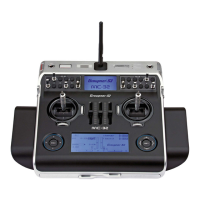
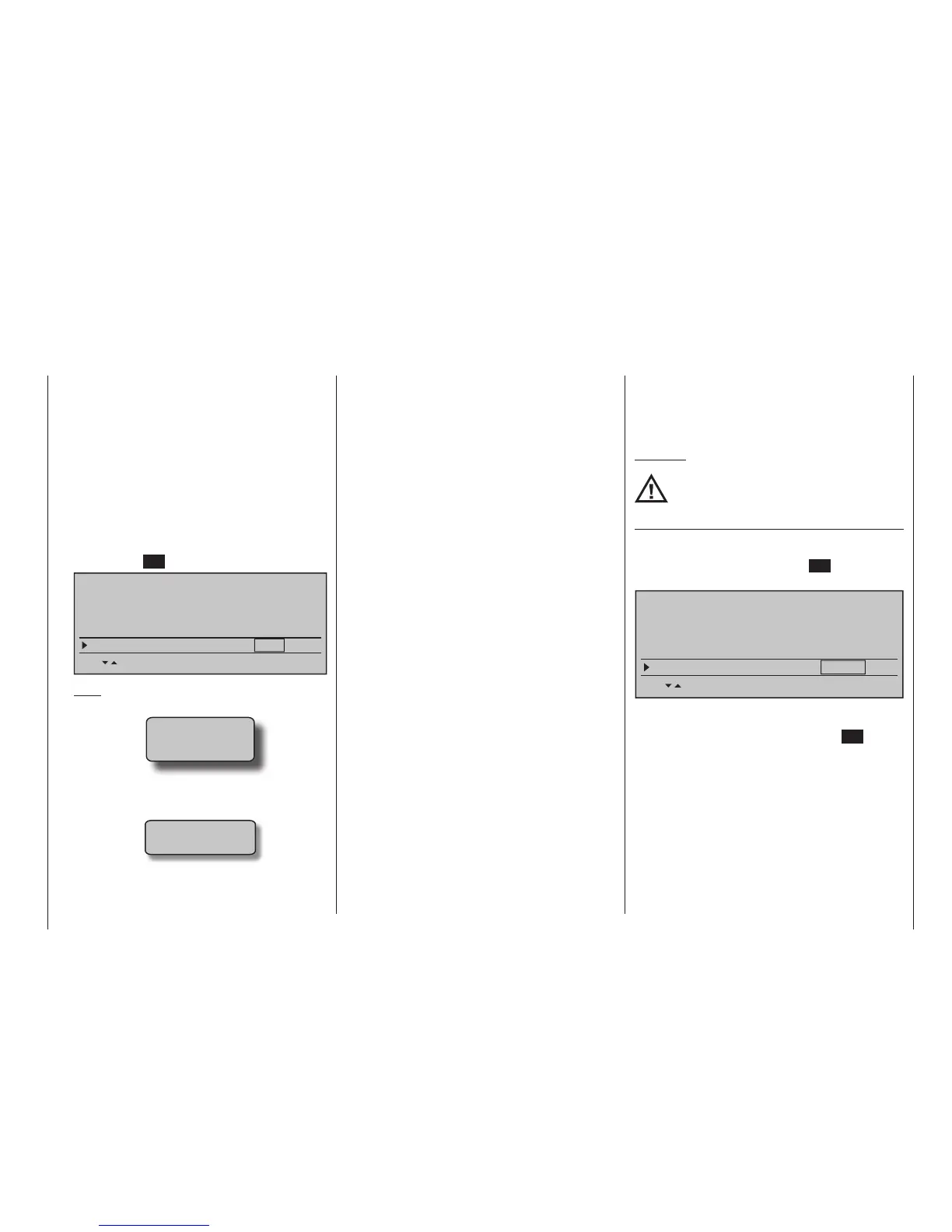